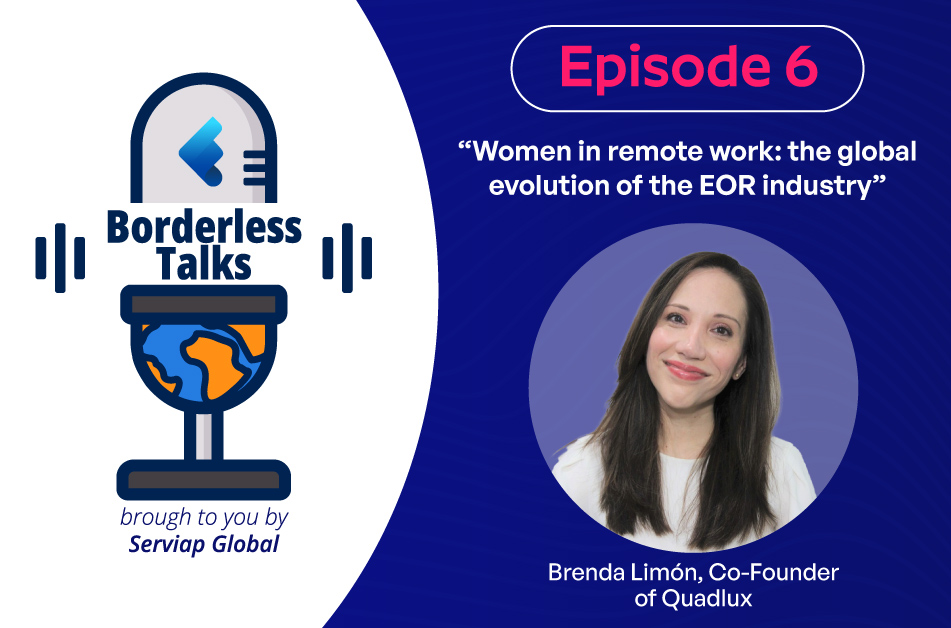We had the pleasure of talking with Brazilian longevity expert Eliane Kreisler on inclusion in the workplace, and how to combat ageism in professional environments.

Ms Kreisler is an HR professional with more than 35 years of experience working and consulting for large companies, covering the likes of performance management processes, knowledge management, development and training.
She holds a post-graduate degree in people management; is a published author on the subjects of longevity, age diversity and work inclusion; and is a founding partner of EK Consultoria Gestão e Carreiras, a consultancy focused on age-related workplace inclusivity and career transition after the age of 50.
She is also a co-founder of the workplace longevity-focused YouTube channel LongeTalks.
Here’s what she had to say:
1) In your experience, at what age do professionals begin to face age-based discrimination for being older?
This discrimination, also known as ageism, can affect older professionals at different points in their careers. It can start to emerge around the age of 45 or older, depending on the industry.
In some areas, more experienced professionals may face challenges in hiring or promotion processes due to stereotypical perceptions that they may be less adaptable to change or less willing to learn new technologies.
On the other hand, in some professions there is an appreciation of the experience and skills of older professionals. In some sectors, such as entrepreneurship, more mature individuals may find significant opportunities.
2) Beyond clear displays of ageism through age-related comments, what forms does age discrimination take in the workplace that may sometimes go unnoticed?
Age discrimination often manifests itself in subtle ways and is sometimes not as overt as direct age-related comments. Some forms that may go unnoticed include:
- Excluding professionals from employment opportunities, hiring or even promotions based on age-related stereotypes, even if they possess the necessary skills and experience.
- Younger employees may receive more opportunities for development and training.
- Harassment or subtle derogatory comments about age, creating an often hostile work environment.
- Older professionals may be excluded from important or strategic projects on the assumption that they will not adapt.
- The assumption that older professionals are not as up-to-date with technology can lead to restrictions on access to new systems and tools.
3) Do you think age discrimination receives as much attention as other forms of workplace discrimination, and if not why not?
Age discrimination does not always receive as much attention as other forms of prejudice in the workplace.
Culturally, Brazil has always been considered a young country. The age pyramid began to reverse in recent decades, and is currently accelerating, due to low birth rates and increasing life expectancy and quality. We live longer and better.
According to research, in 2050, the elderly population will represent about 30% of the Brazilian population.
In the corporate market, this discrimination, often veiled, appears in assumptions and ignorance about the aging process. Culturally, we create stigmas that undermine reality and the scenario today is quite different. Professionals over 50, in general, keep up-to-date and their capacity and experience add a lot to projects.
4) In what ways does ageism intersect with other forms of discrimination and in your experience are older professionals more prone to face other forms of discrimination?
Age prejudice can intersect with other forms of discrimination, such as:
Gender and age: Older women face discrimination based on age and gender, also known as ‘gender ageism’, such as being less productive or less able to adapt to technological changes.
Race and age: Older professionals belonging to racial minorities may be affected by stereotypes related to age, race or ethnicity, which may hinder their employment opportunities and career advancement.
Digital skills and age: Older professionals may face challenges when competing in the job market due to stereotypes about their digital skills compared to younger people.
5) What are some of the biggest challenges faced by older professionals in networking and career transition?
Some challenges include:
- When networking, older professionals may encounter a change in social dynamics, especially in sectors where the average age is younger. This can lead to difficulties in identifying common interests and forming meaningful connections.
- Some potential contacts may have negative stereotypes about older professionals, which may affect the willingness of some people to connect with them.
- When in career transition, older professionals may encounter established professional networks that are dominated by younger colleagues. Breaking into these networks can be challenging and requires extra effort to build strong relationships.
To overcome these challenges, it is important for older professionals to adopt strategic approaches to networking and career transition. This may involve attending professional events related to your field of interest, investing in developing technology skills relevant to the current market, and seeking out mentors or support groups that value age diversity.
6) What legal frameworks or policies are in place to address ageism in the workplace in Brazil, and how effective have they been? What else should be done in this regard?
In Brazil, the main legislation addressing this issue is the Federal Constitution of 1988, which prohibits age discrimination, as well as Law No. 9.029/95, which prohibits employer age requirements in job advertisements or in the selection process.
In addition, the Consolidation of Labor Laws (CLT) establishes that it is forbidden to discriminate against workers on the grounds of their age, ensuring equal opportunities at all stages of the opportunities at all stages of the employment relationship.
Despite these legal frameworks, effectiveness in combating age bias in the workplace can be challenging. Age discrimination often are difficult to prove and enforce laws. In addition, there are still cultural challenges and deep-rooted stereotypes.
To combat age discrimination we should consider:
- Promoting awareness and education campaigns about age diversity.
- Adopting inclusive policies that value the experience and skills of older professionals.
- Providing diversity training for everyone in the company in order to promote an inclusive work environment.
- Stimulating the exchange between professionals of different age groups, valuing mutual learning, through reverse and intergenerational mentoring programs.
7) In your experience, has the rise of remote working seen in recent years had an effect on ageism in workplaces, be that positive or negative?
Positive effects:
- Remote working can level the playing field, making age differences less evident and allowing professionals to be evaluated based on their productivity and results.
- It can offer more flexibility for older professionals who may have a preference for different hours and ways of working.
- It can create a more inclusive environment, especially for some older professionals who may struggle with daily commutes or face physical barriers.
Factors to watch out for:
- Remote working can create challenges for older professionals who are not as familiar with technology, reducing their opportunities to participate in certain roles.
- Remote working can lead to greater social isolation, this has created an increase in mental health issues in the workplace.
8) What strategies and initiatives have you observed that effectively promote age inclusion in the workplace?
- Companies that adopt formal diversity policies, which include valuing the experience and skills of older professionals.
- Providing awareness training for all employees, addressing issues of age bias and highlighting the importance of valuing age diversity.
- Intergenerational and reverse mentoring programs that provide for the exchange of experiences and knowledge between professionals of different age groups.
- Valuing and recognizing the contributions and achievements of older professionals help to break down negative stereotypes and promote a culture that values age diversity.
It is important that these initiatives are implemented in a consistent and sustainable manner, accompanied by monitoring to ensure that inclusive practices are effectively incorporated.
9) How can organizations create a culture that values the contributions of older professionals and ensures they have equal growth opportunities?
- Inclusive leadership: The leaders must demonstrate a commitment to age inclusion at all levels of the company.
- Diversity and inclusion policies: Establish formal policies that emphasize the importance of age diversity in the workplace.
- Awareness training: Provide regular training for employees addressing issues of age bias and promoting awareness of the importance of inclusion.
- Participation and involvement: Encourage the active participation of older professionals in key company projects and decisions, ensuring that their voices are heard and valued.
This not only benefits older professionals, but also contributes to a more enriching and innovative work environment.
10) What are the most common solutions you promote to organizations to help them overcome the potential for ageism in the workplace? Which essential measures do you most often see not being implemented?
- Analysis and transformation of the organizational culture, adapting to the new scenario. I emphasize on the mindset change being introduced to main leaders, especially CEOs.
- Organizations should develop formal policies that respect age diversity, having consistent and sustainable programs that aim at intersectionality.
- Provide regular trainings to employees on age bias.
- Promote the formation of intergenerational teams.
Still, we have measures that are difficult to implement:
- Some organizations are not fully aware of the impact of age bias and therefore do not consider the need to combat this form of discrimination.
- Some organizations are still reluctant to change their recruitment practices and retirement policies.
- Unconscious biases about age can influence hiring, promotion and career development decisions, even if unintentional.
Overcoming these challenges requires a genuine commitment from organizations to value age diversity and implement concrete measures to combat age discrimination. Awareness, sensitization and committed leadership are essential to create inclusive work environments where all professionals can thrive and contribute their skills and experiences, regardless of their age.
Eliane Kreisler is a workplace longevity expert based in São Paulo, Brazil. She was speaking to Rafael Sens.
Serviap Global supports international hiring
At Serviap Global, we help companies with global hiring solutions in over 100 countries worldwide, including international PEO / EOR services, contractor hiring, and recruitment.
Contact us for more information.







